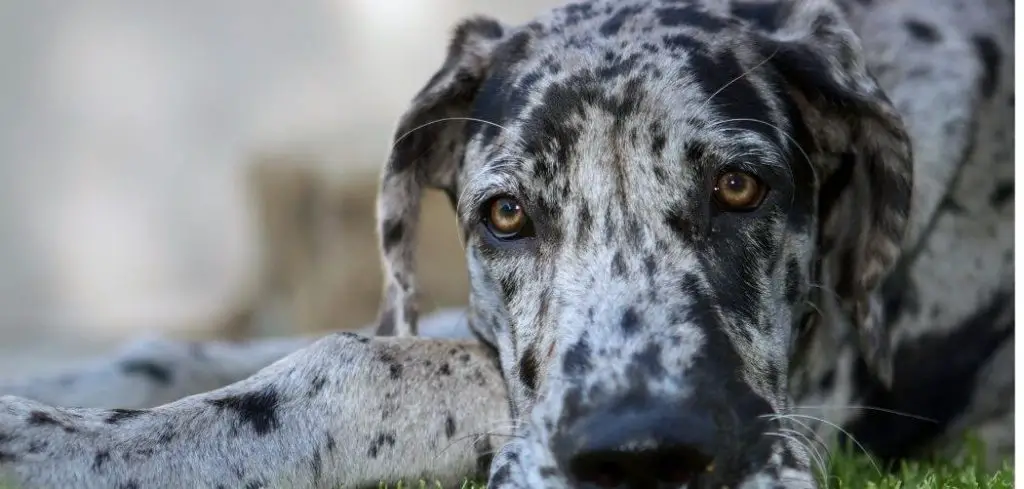If your dog is eating and drinking excessively, it can be alarming—especially if it starts suddenly or is paired with other changes in behavior.
While a big appetite or thirst might seem harmless at first, these symptoms can point to serious health conditions.
We outline the common causes of excessive eating and drinking in dogs, what you can do at home, and when to seek veterinary help.
Dog Eating and Drinking Excessively — Why It Happens
Excessive eating and drinking in dogs can signal more than just a big appetite or thirst. Hormonal imbalances such as diabetes or Cushing’s disease often lead to increased hunger and thirst. Kidney disease and certain medications can also cause changes in appetite and hydration.
Sometimes, behavioral issues or poor diet quality might contribute as well. Regardless of the cause, sudden or extreme changes in eating and drinking habits warrant attention.

Dog Eating and Drinking Excessively: Common Causes
Diabetes Mellitus
Diabetes can cause both excessive thirst (polydipsia) and excessive hunger (polyphagia).
This occurs because the dog’s body is unable to properly use glucose for energy. As a result, your dog may feel constantly hungry despite eating normally or more than usual.
High blood sugar levels also cause dehydration, leading to increased water consumption.
Other signs include weight loss, frequent urination, cloudy eyes, and lethargy.
Left untreated, diabetes can become life-threatening. It’s crucial to manage the condition with the help of your veterinarian.
Read more: Dog shivering and not eating but drinking water (Is this an emergency?)
Cushing’s Disease
Cushing’s disease, or hyperadrenocorticism, results from an overproduction of cortisol.
This hormone imbalance often leads to a voracious appetite and an insatiable thirst. Dogs may also gain weight, lose hair, or develop a pot-bellied appearance.
You might notice your dog panting more, acting restless, or having accidents in the house.
It tends to affect middle-aged to older dogs and requires diagnostic tests and long-term management.
Kidney Disease
Kidney dysfunction affects your dog’s ability to concentrate urine.
This can lead to excessive water intake and more frequent urination. In the early stages, dogs may still eat normally—or even more than usual—before appetite begins to decline.
Watch for symptoms like pale gums, weight loss, vomiting, and lethargy.
If caught early, kidney disease can often be managed with diet changes and medication.
Medication Side Effects
Some medications can increase appetite and thirst.
Steroids like prednisone are common culprits. They can cause dogs to feel hungrier and thirstier than usual while also leading to weight gain.
While these side effects are expected, any sudden or extreme changes in behavior should still be reported to your vet.
Sometimes, dosage adjustments or medication changes are necessary.
Poor Quality Diet or Nutrient Deficiency
A low-quality or unbalanced diet might not satisfy your dog’s nutritional needs.
This can lead to continued hunger and excessive water drinking if your dog is compensating for missing nutrients or is dehydrated.
You may also notice poor coat condition, stool irregularities, or changes in energy levels.
Switching to a vet-approved, high-quality diet can help correct deficiencies and improve overall health.
Behavioral Factors or Anxiety
Some dogs overeat or drink excessively out of boredom or anxiety.
This is more common in dogs left alone for long hours or those without enough mental and physical stimulation. They may chew, pace, or bark excessively alongside changes in eating habits.
In these cases, a consistent routine, enrichment activities, and addressing underlying stressors can reduce the symptoms.
What to Do If Your Dog Is Eating and Drinking Excessively
Start by observing your dog’s patterns. Note when the behavior began and any other changes like weight gain, increased urination, or energy shifts.
Make sure your dog’s diet is complete and balanced, with appropriate portions for their age and size. Avoid feeding table scraps or low-quality food, which can worsen the issue.
Check your dog’s environment and routine. Have there been recent stressors like a move, new pet, or family changes? Reducing stress and increasing daily exercise may help.
If your dog is on medication, ask your vet whether side effects include increased hunger or thirst. Never stop medications without veterinary guidance.
Offer measured meals instead of free feeding to monitor intake. Provide plenty of fresh water, but don’t restrict access, as excessive thirst may be compensating for a medical issue.
When to Call or Visit Your Vet
Seek veterinary help if your dog:
Suddenly starts eating or drinking far more than usual
Is urinating more frequently or having accidents in the house
Has unexplained weight gain or weight loss
Seems lethargic, anxious, or unusually restless
Vomits, has diarrhea, or appears bloated
These symptoms could indicate diabetes, kidney issues, or hormonal imbalances that require bloodwork and physical exams.
Bring a log of your dog’s appetite, water intake, urination patterns, and any behavioral changes to your appointment. This helps your vet diagnose and treat the issue more effectively.
Read more: Dog Drooling and Not Eating (Why this might be more serious)
Key Takeaway
When a dog is eating and drinking excessively, it’s not just about being hungry or thirsty—it can be a warning sign of underlying health problems.
Stay attentive to changes in behavior, and make dietary and environmental adjustments where needed.
If symptoms persist or worsen, reach out to your vet for a thorough evaluation. Prompt care can make all the difference in your dog’s long-term health and comfort.
